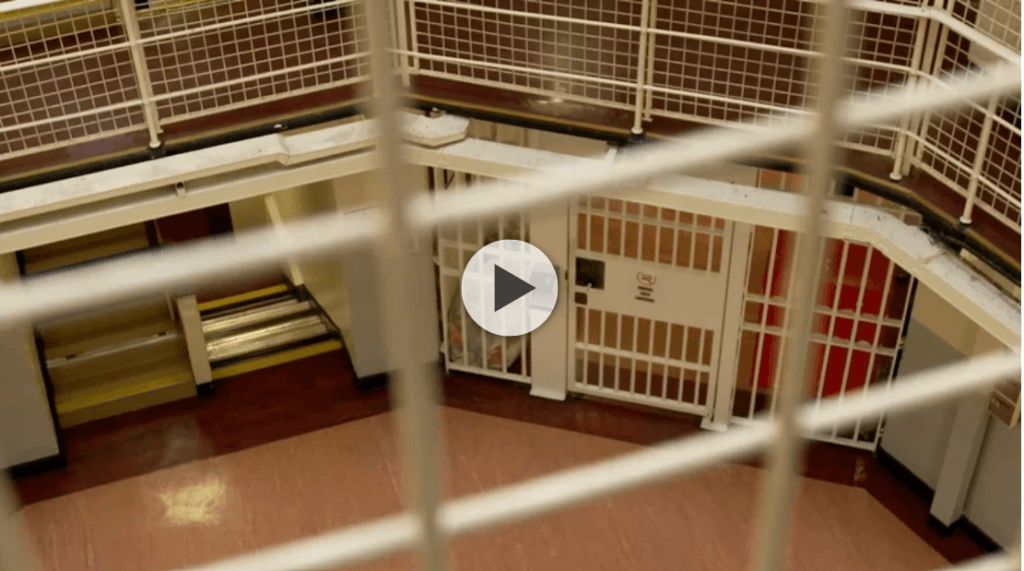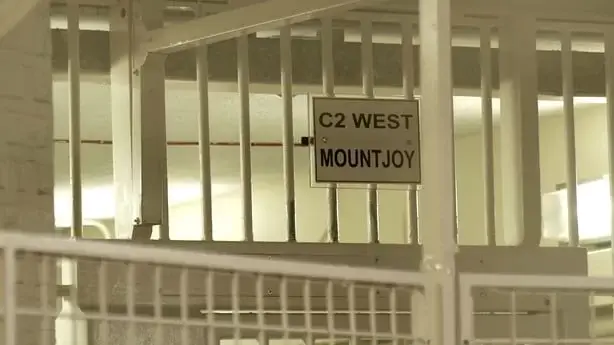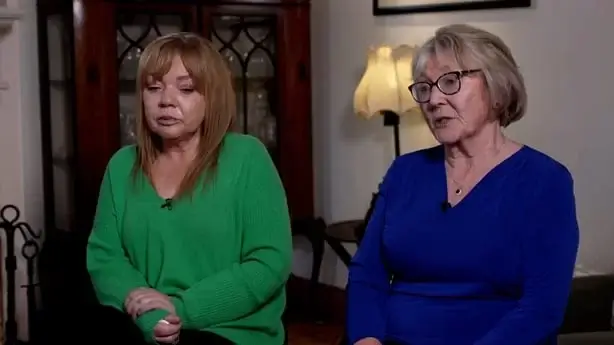
With more than 500 life sentence prisoners, Ireland has reached its highest ever number of ‘lifers’. Security Correspondent Barry Cummins speaks to the families of victims and officials about the reality of life sentences in modern Ireland.
If a person is found guilty of murder, only one kind of sentence is handed down to them.
It is called ‘imprisonment for life’ but, in reality, most convicted murderers will one day walk out of prison.
Figures provided to Prime Time by the Department of Justice show that, as of 27 February, there are 117 male and five female life-sentence prisoners living in the community.
“Some people are currently out on supervision for longer than they served in prison,” former head of the Probation Service Vivian Geiran told Prime Time.
“They might be on release since the 1980s or 90s. The vast majority of those, in my experience, do go on to live productive and positive and pro-social lives.”
The next stage of the life sentence after leaving prison is in the community, where a prisoner is subject to recall to prison if they breach parole conditions.
The amount of time spent in prison depends on what decade a murderer was convicted. Back in the 1970s and 1980s, the average time a life sentence prisoner spent in jail was around seven-and-a-half or eight years.
However, in recent years, time spent in prison has dramatically increased for those convicted of murder.
The Department of Justice told Prime Time that the eight life sentence prisoners released ‘on licence’ last year had spent an average of 24 years in prison. That is the highest ever yearly average recorded in Ireland.
The previous year was the second highest average time spent in prison for ‘lifers’ released. The four ‘lifers’ released in 2022 spent an average of 22-and-a-half years behind bars.
Over the past 10 years, the average time spent in custody for released prisoners was 20 years.
In line with the experience of many other western countries, the amount of prison time experienced by life sentence prisoners has increased in this century.
In Ireland, the 2010s has seen consistently high averages for time spent in prison compared to the 2000s.
For example, the four ‘lifers’ released in 2012 had spent 22 years in jail; while the three ‘lifers’ released in 2002 had spent 11 years in jail, on average.

Purpose of a life sentence
“Imprisonment in the first instance is about punishment,” said Mr Geiran.
“It’s about holding the person to account. In a life sentence there is the punitive aspect. How long is an appropriate time for an individual to serve in custody on the basis of the gravity of the offence? At what point can we say they’ve done enough time and they are a reasonable prospect for rehabilitation and re-integration?”
The longest serving life sentence prisoner in Ireland is John Shaw who, along with his now deceased fellow Englishman Geoffrey Evans, abducted, raped and murdered women in Co Wicklow and Co Mayo in 1976.
Shaw and Evans hid the body of their first victim off the Wicklow coast; they weighed the body of their second victim down in a lake in Co Galway.
Shaw is a prisoner at Arbour Hill Prison and very occasionally is brought into Dublin city centre in the company and custody of prison officers on escorted released.
That is the extent of his release into the community. He has sought parole but this has been rejected on many occasions.

Reoffending rates
Statistically, life sentence prisoners are less likely to re-offend than other released prisoners.
The Central Statistics Office provided Prime Time with figures which show that, in 2021, 20 people were released from prison for homicide-related offences.
This included 13 life sentence prisoners convicted of murder, and seven who served determinate sentences for manslaughter; a specific period of years imposed by the sentencing judge.
Of those 20 convicted killers who left prison, four committed another criminal offence within a year. That’s a 20% re-offending rate.
By comparison, 41% of all other prisoners released that same year re-offended within 12 months.
The statistics across other years show a similar picture. The vast majority of life sentence prisoners released into the community are not detected for further offences.
The problem, however, is that of the smaller number that do re-offend – sometimes it can be in the most horrific manner.
Richard Kearney was just 17-years-old when he murdered a 72-year-old woman who he beat to death after breaking into her home in Finglas in 1998.
He was convicted of murder following a trial and given the mandatory sentence of ‘life imprisonment’.
Kearney had been released on licence, having served 19 years of a life sentence in jail for murder.
Kearney was ‘crime-free’ for a number of years after being released on licence. But five years after being released, he attacked another woman at her home, as well as two elderly priests in their home. He also accosted a prison chaplain in her home.
Kearney was jailed for eight years for those offences in 2023, and his life sentence will now continue within a prison cell.

The crimes of Thomas Murray will live long in the minds of those who know what he did.
Murray murdered a man in 1981 and was jailed for life.
However, it was while on day release from that life sentence in 2000 he murdered a second elderly victim, an 80-year-old woman, in Co Galway.
It is still shocking to consider that the evening Murray murdered his second victim he returned to Castlerea Prison as arranged to continue serving his first life sentence.
A short time later Gardaí identified Murray as the killer. He is now serving two life sentences.
Minimum tariff
Both Murray’s life sentences were mandatory; in neither case did the judge have the discretion to impose a minimum tariff by which Murray should have remained in prison before parole might be considered.
It is a source of much ongoing debate that when it comes to the most serious crime on the statute book – a judge is nothing more than a rubber stamp once a trial has concluded.
All the judge can do is formally impose the mandatory sentence. The judge cannot bring their legal nous to bear on the case, cannot mark the severity of certain crimes, cannot give a guide for generations to come that a particular offender has committed particularly stark and shocking crimes which warrant particularly punitive sanction.
This issue was highlighted recently by Mr Justice Tony Hunt as he sentenced Josef Puska to life imprisonment for murdering Ashling Murphy in Tullamore.
Puska attacked his victim at random as she walked along the pathway of the Grand Canal outside the town.
Despite strong evidence, including Puska’s DNA found under the victim’s fingernails, he pleaded not guilty and a jury was asked to determine guilt or innocence.

The jury found Puska guilty. As Mr Justice Hunt imposed the mandatory sentence, he said it was long past time when Irish judges should have a say in the minimum term served.
The judge said that while every murder is grave, not every murder is the same. Those in court were left in no doubt that if he had the power, the judge would have imposed a lengthy minimum tariff on Josef Puska to accompany his mandatory ‘life’ sentence.
As things stand, Puska is entitled to begin engaging with the parole process once he has served 12 years in prison.
The Parole Act of 2019 states that every life sentence prisoner must serve 12 years in prison before seeking parole, where it had previously been seven years.
It is quite likely that Puska will serve much longer in prison than 12 years but the absence of a minimum tariff in life sentences in Ireland means it is not clear how much time he might serve, or if he ever might be released.
Gráinne Dillon murder
Judges have long expressed opinions on murder cases that come before them.
In March 2003, Mr Justice Barry White described the murder of Gráinne Dillon as the most vicious, brutal and callous murder he’d ever encountered.
He made those comments as he sentenced Paulo Nascimento to life imprisonment after he had pleaded guilty to the murder of Gráinne Dillon, a fellow worker at the Jurys Inn hotel in Limerick.

Nascimento had only been working at the hotel a few days when he used a stolen shotgun to rob €3,000. Gráinne was working in the restaurant area in the early hours of the morning when Nascimento struck.
“He had a shotgun, a single barrel shotgun,” Gráinne’s mother Pat told Prime Time.
“He shot her once, and then he frog-marched her out into a dry cupboard, a pantry area and shot her a second time. He then left her and went upstairs, changed his clothes and came down, got the shotgun again. Remember, he reloaded it, came down and shot a third time.”
Nascimento was a former soldier in the Portuguese army. On the day of his scheduled trial at the Central Criminal Court he suddenly pleaded guilty. This meant that only a short summation of the evidence was given before the automatic life sentence was handed down by the judge.
“I was furious,” recalled Gráinne’s sister Clíona. “I wanted the facts to come out as to how callous the murder had been, how prolonged Gráinne’s death was. Gráinne didn’t die instantly, Gráinne bled to death.”
“He had immobilised her after the first shot. He could have taken his €3,000 and left. I wanted everybody to know it wasn’t a spur of the moment killing, it wasn’t,” she told Prime Time.

The Dillon family soon discovered that their engagement with the Irish justice system would continue for decades.
Firstly, they successfully fought attempts by Nascimento to be allowed return to Portugal to serve his sentence.
Next, the Dillons discovered that Nascimento was entitled to apply for parole after seven years in jail.
Gráinne’s loved ones then found themselves writing to the Parole Board every two years objecting to attempts by Nascimento to be given release.
Nascimento is currently in Shelton Abbey Open Prison in Co Wicklow, having now served 22 years and almost 2 months in jail.
He is one of 380 life sentence prisoners in jail, but is getting occasional periods of release.
He was granted release last Christmas and is seeking further releases.
“As far as we are aware he has never expressed any remorse,” Clíona told Prime Time. “It’s hard to accept they are letting someone out who is not remorseful.
“He murdered my sister. Every one of my family’s lives, all our lives were affected by it and continue to be to this day. It’s all about the prisoner’s rights, but where’s Gráinne in all of this?”
“People do not realise that this does not end on the day someone is found guilty.”
Watch the full report by Security Correspondent Barry Cummins and produced by Sallyanne Godson on Prime Time tonight, RTÉ One at 9:35pm.

Security Correspondent, Prime Time

